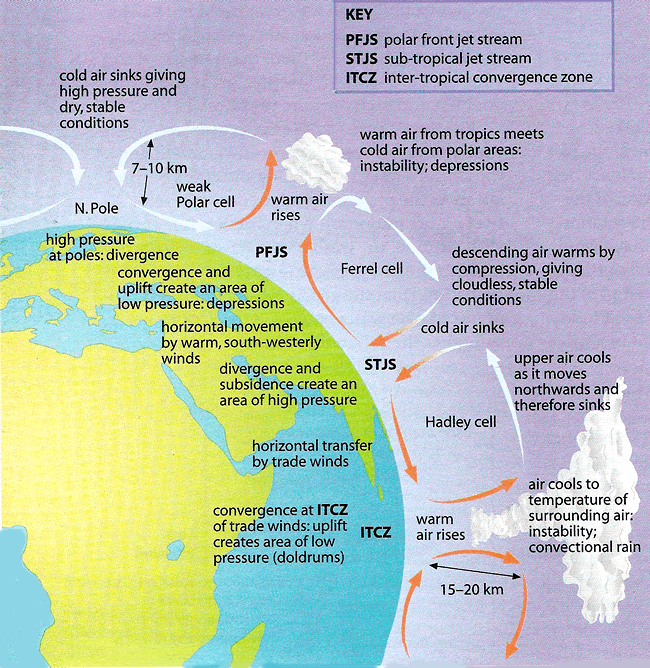This rising air is a direct result of the heating of air by the high altitude of the sun. As air is heated it vibrates and expands,. As it expands it becomes lighter and begins to rise. This convectional process of rising air over the ITCZ creates the familiar pattern of tropical rain. As air rises it cools adiabatically and condenses to produce towering cumulonimbus rain clouds. In addition, it forms an extended area of low pressure

Because the air has heated and remains warmer than the air around it, air continues to rise and as it rises it cools, untill it reaches the tropopause
At this point it can rise no further, because its temperature is now cold (approximately -50°C) and consistent with the temperature of the upper troposphere and tropopause around it. Due to continued rising air below it the cold air is forced to the south and north. As it moves away from the ITCZ it experiences radiationally cooling and begins to slowly sink. As the air sinks it warms and its relative humidity falls
Comments
No comments have yet been made